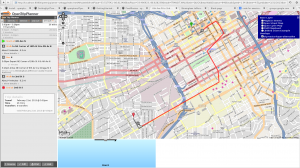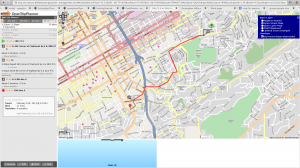Birmingham’s bus system, the MAX, still isn’t up on Google Transit. As a bus rider, I have found this to be a huge hurdle in getting more riders. After four years of their website having a coming soon, and still no trip planner in site, I’ve decided to take on the project myself.
I started off looking for some free programs to create GTFS data. I was unable to find what I needed as they all assumed you already had a database of your stops, and just need to convert the data. Â Unfortunately, the BJCTA does not publicly publish their stop locations, and I’m convinced they don’t even know where their stops are located. This meant I needed to catalog all the stops too.
I’ve started work on software to help me with this project. The project consists of two parts:
- A website to crowd source the stop locations
- An application to take all the cataloged locations, build routes, create time tables, and generate GTFS data
You can find my website for cataloging stop locations here. This site is designed so that anytime you see a bus stop, take a picture of it with a GPS enabled phone, and upload it. This gives me the location of the stop, plus I can see which routes pass through that stop. So far, with the help of the community, I have cataloged over 800 stops. I am estimating there are about 2500 stops in Birmingham, so we still have a long ways to go.
As the community helps me catalog stops, I am also developing an application that takes those stops, builds routes, creates time tables, and generates all the GTFS data. This program has been developed for me, so it is still very rough around the edges, and only implements what I need, but I have released the source, so you can branch it and use it. It currently only runs on linux, I’m running it under Fedora 18. If you want to branch the code, you’ll need the bzr tool.
bzr branch http://bzr.line72.net/subte/master subte-master
Hopefully, in the next few months we’ll have finished cataloging all the stops and will be able to begin beta testing the trip planner on Google Transit! If you are interested in helping out, please visit the above site and start cataloging. Every picture helps!


